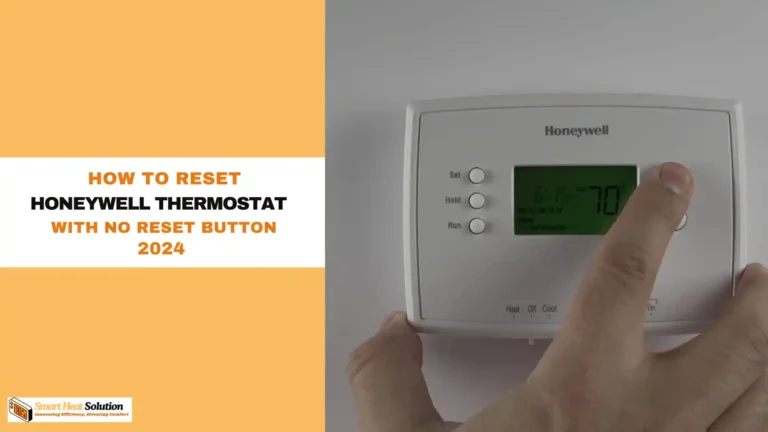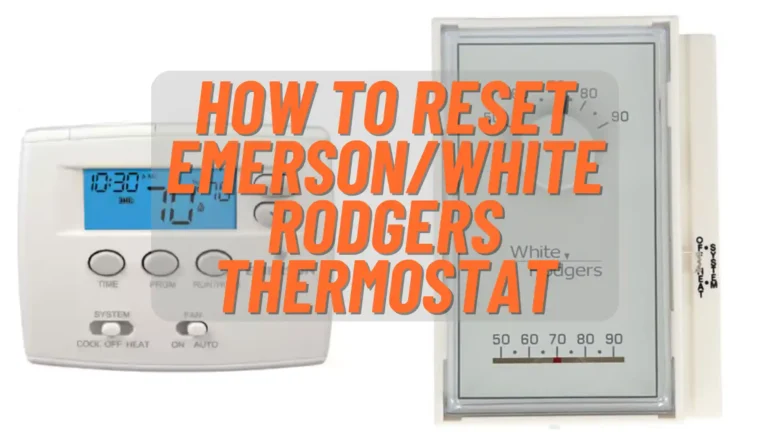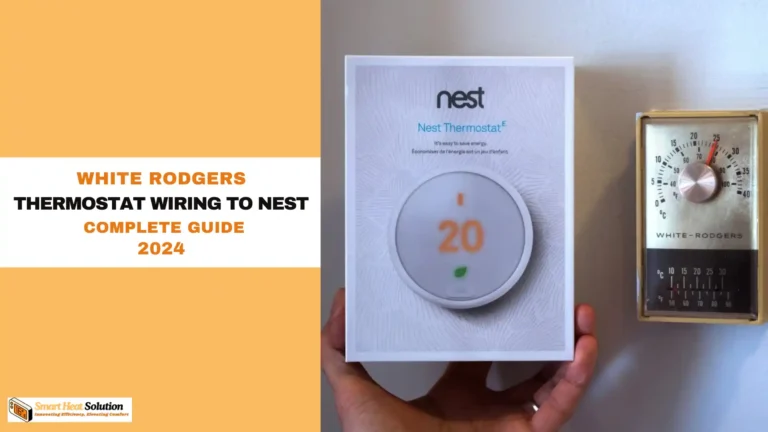What is Auxiliary and Emergency Heat (EMER) On A Nest Thermostat?
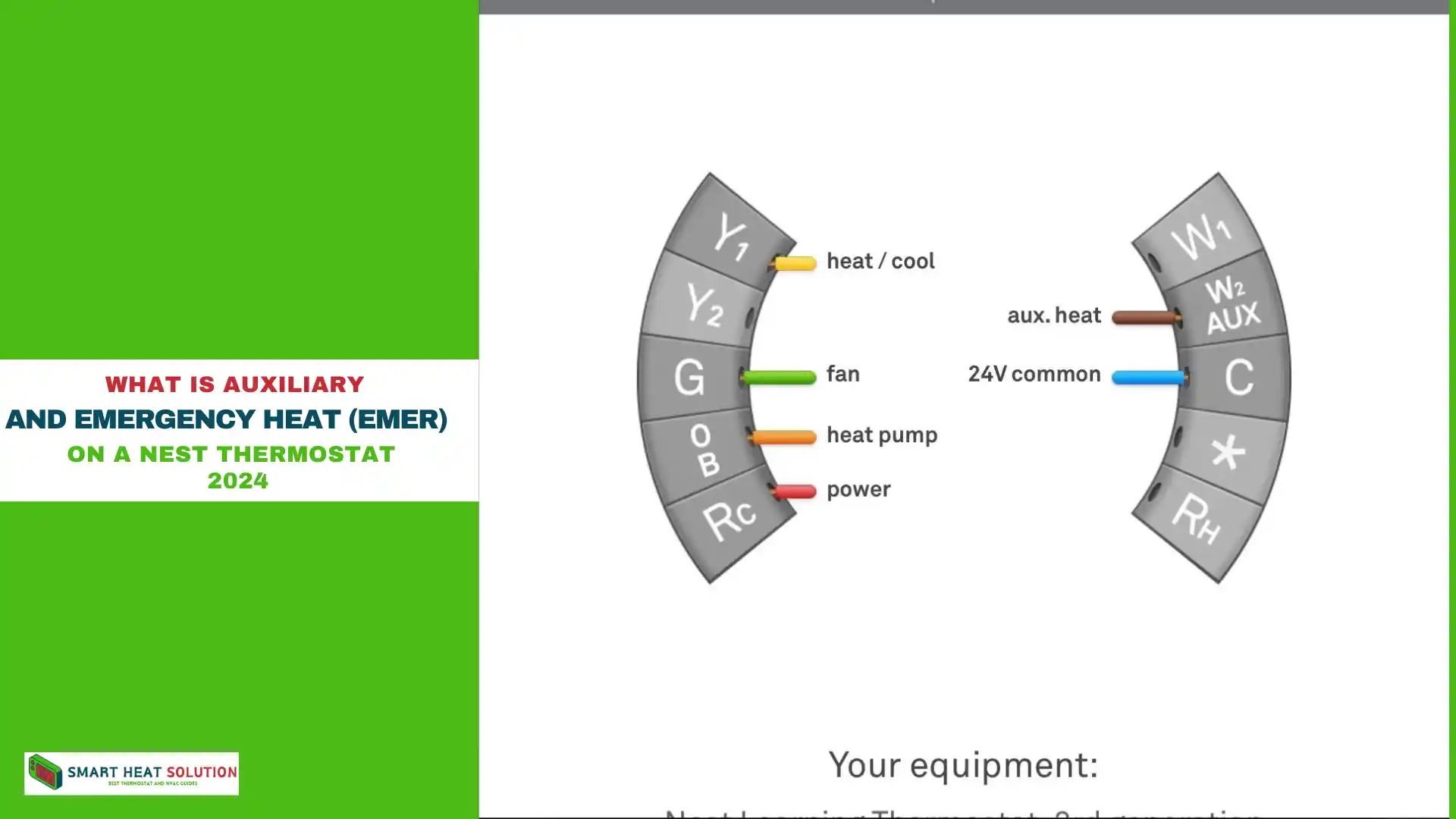
Heating systems, particularly heat pumps, often have more features than the average user realizes.
Two of these critical functions are auxiliary heat and emergency heat—settings that can impact both the effectiveness and efficiency of home heating.
In this guide, we will dive deeply into what auxiliary and emergency heat are, how they function on a Nest thermostat, and when each setting is activated.
What is Auxiliary Heat on a Nest Thermostat?
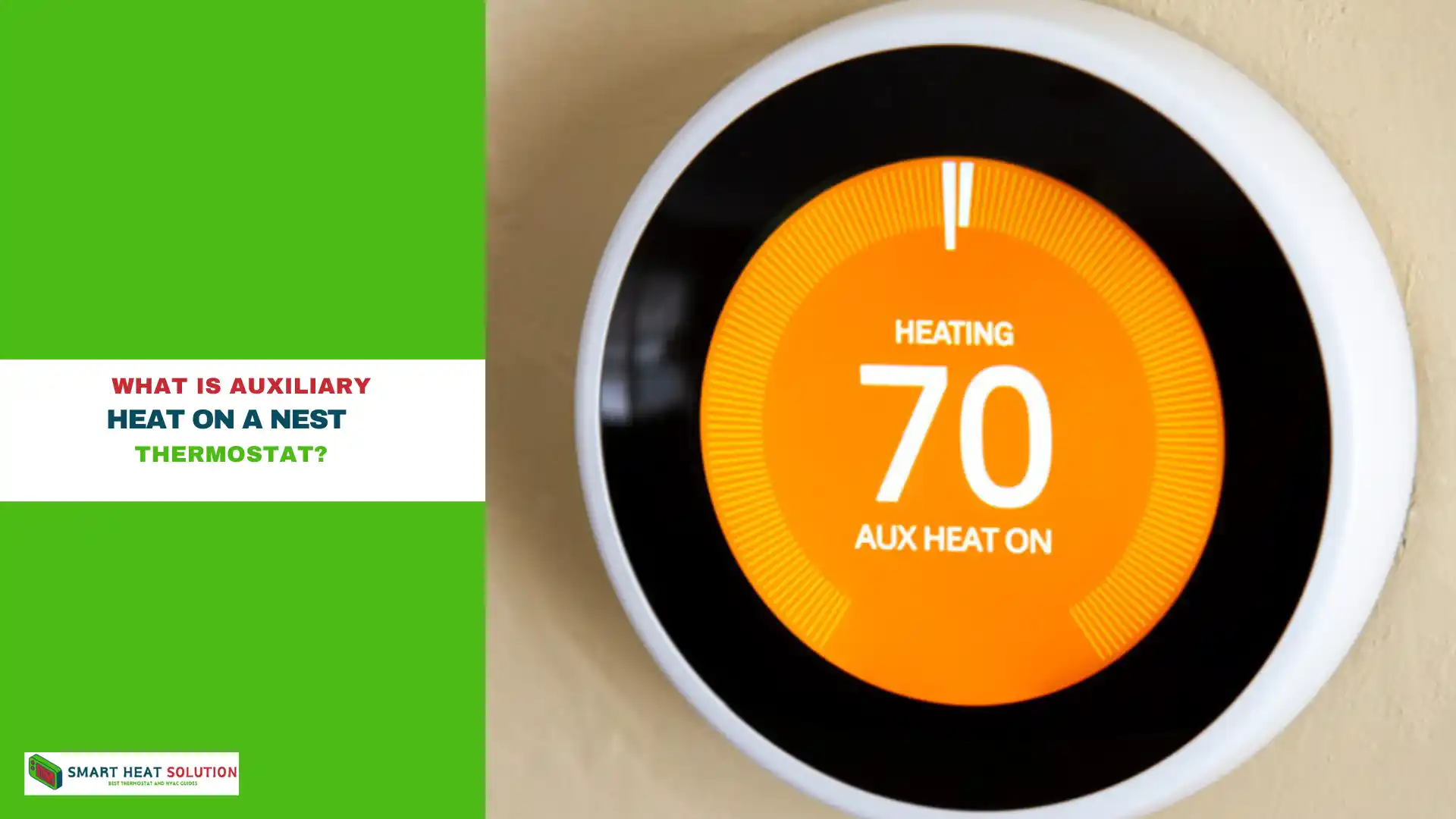
Definition and Purpose of Auxiliary Heat
Auxiliary heat (or AUX heat) is a supplemental heating function in heat pump systems designed to provide additional warmth when the heat pump alone can’t meet the thermostat’s temperature setting. This feature is generally triggered under colder conditions, typically below 35°F (1.6°C), when the heat pump’s efficiency may start to drop. AUX heat activates automatically on most systems and is essential for maintaining comfort without overtaxing the main heat pump.
How Auxiliary Heat Works with a Nest Thermostat
When temperatures fall, the Nest thermostat automatically switches to auxiliary heat if it detects that the primary heat pump can’t keep up with the demand. This is common in systems with electric resistance coils or backup gas heating elements. The thermostat uses the following process:
- Temperature Monitoring: Nest monitors indoor and outdoor temperatures.
- Automatic Activation: If the main heat pump struggles, AUX heat activates to supply extra warmth.
- Smart Adjustments: Nest’s algorithm calculates the shortest time to reach the target temperature, balancing between AUX and primary heating to avoid excessive energy usage.
Advantages of Using Auxiliary Heat
Using auxiliary heat ensures that your home remains comfortable even when temperatures drop unexpectedly. With a smart thermostat like Nest, this transition is optimized for minimal energy impact, leveraging AUX heat only when truly needed.
What is Emergency Heat on a Nest Thermostat?
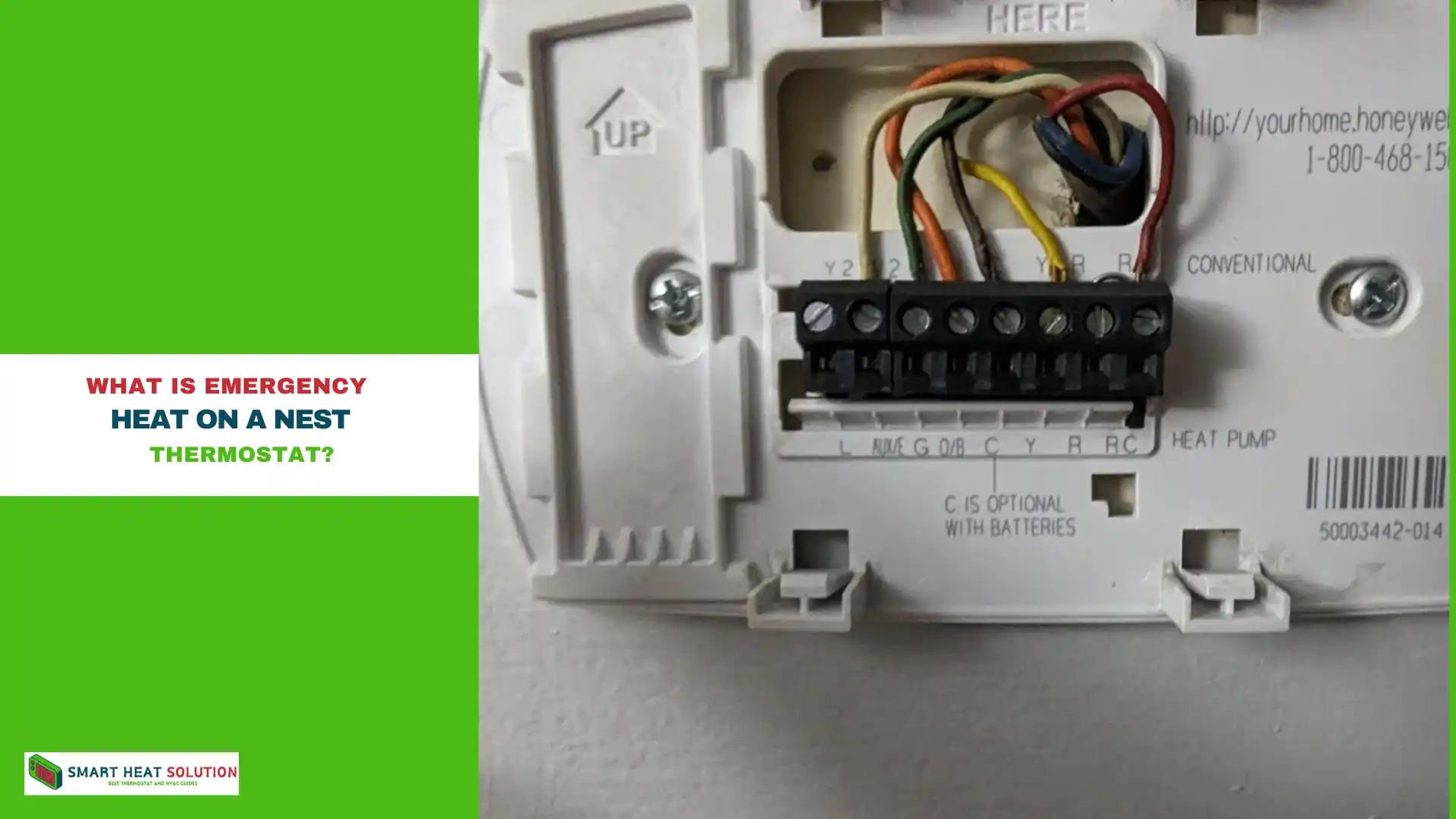
Definition and Purpose of Emergency Heat
Emergency heat is a manual backup heating mode designed for situations when the primary heat pump has failed or is unable to operate efficiently due to extreme cold. Unlike auxiliary heat, which engages automatically, emergency heat is a setting you activate manually on the Nest thermostat.
This function bypasses the heat pump, directly using backup heating sources, such as electric resistance heat or a gas furnace, to keep your home warm.
When to Use Emergency Heat
Emergency heat is only intended for emergency situations where the primary heating system cannot function. It’s not a feature to be used lightly, as it generally consumes significantly more energy than normal heating modes. Situations that may require emergency heat include:
- Heat Pump Malfunction: When the main heat pump is damaged or undergoing maintenance.
- Extreme Cold Weather: In temperatures well below the freezing point, where the heat pump alone is ineffective.
- Unexpected Cold Spells: When the weather turns severe unexpectedly, and the heat pump is underpowered.
Note: Use emergency heat sparingly due to its high energy consumption. Keeping your thermostat at a consistent temperature can help minimize the need for this backup.
Differences Between Auxiliary and Emergency Heat
| Feature | Auxiliary Heat | Emergency Heat |
|---|---|---|
| Activation | Automatic (triggered by temperature) | Manual (user-controlled) |
| Purpose | Supplemental heating for colder temps | Backup heating when primary fails |
| Efficiency | Moderate energy usage | High energy usage |
| When to Use | When the primary heat pump struggles | In case of emergency or pump malfunction |
How Nest Thermostat Manages AUX and Emergency Heat
Nest thermostats are designed to seamlessly manage both auxiliary and emergency heat, utilizing smart technology to make heating efficient:
- Automatic AUX Heat: Nest automatically initiates AUX heat when needed, calculating the most energy-efficient operation mode.
- Manual Emergency Heat: Users can activate emergency heat manually via the Nest app or thermostat interface if there’s a problem with the primary heat pump.
Configuring AUX and Emergency Heat on Nest Thermostat
- Accessing Settings:
- Open the Nest app or navigate directly on the thermostat.
- Select Settings > Equipment to view your heat pump settings.
- Activating Emergency Heat:
- Select Emergency Heat to enable. Once activated, this will bypass the heat pump and rely solely on backup heating.
- Monitoring Performance:
- The Nest app provides real-time data on energy usage, including AUX and emergency heat activation. This helps you understand how often these modes are triggered and if adjustments are needed.
When Should You Worry About Auxiliary and Emergency Heat Usage?
Frequent Auxiliary Heat Activation
If your system consistently uses auxiliary heat, it may indicate:
- Insufficient Insulation: Poor insulation can cause temperature drops that force AUX heat activation.
- Undersized Heat Pump: A heat pump that’s too small for the space may struggle, especially in colder temperatures.
- Thermostat Settings: Set a temperature that’s realistic for your climate to reduce AUX heat use.
Excessive Emergency Heat Use
Frequent reliance on emergency heat often indicates a problem with your heat pump:
- System Maintenance: Check if the heat pump requires cleaning or repairs.
- Thermostat Faults: Issues with Nest’s sensors can lead to inaccurate temperature readings.
- Extreme Weather: Prolonged cold spells might necessitate adjustments to your heating system.
Reducing Energy Costs with Smart Heat Management
Nest thermostats include several features to help optimize energy usage and reduce costs associated with AUX and emergency heat:
- Eco Temperature Settings: Use Nest’s Eco mode for efficient temperature settings that avoid excessive AUX heat activation.
- Automatic Scheduling: Schedule heating based on usage patterns to prevent unnecessary energy usage.
- Regular Maintenance: Regularly service your heat pump to ensure it operates at peak efficiency, minimizing the need for auxiliary and emergency heat.
Common Questions About AUX and Emergency Heat on Nest
Can I Turn Off Auxiliary Heat on Nest?
No, auxiliary heat is typically an automatic function controlled by the thermostat. However, adjusting your thermostat’s temperature settings can help limit how often AUX heat is used.
Will Using Emergency Heat Increase My Energy Bill?
Yes, emergency heat consumes more energy and will significantly impact your energy bill if used frequently. It’s advisable to reserve this function for extreme conditions or when the heat pump is malfunctioning.
How Do I Know If AUX or Emergency Heat Is On?
The Nest thermostat display will indicate when AUX or Emergency Heat is active. In the Nest app, you’ll also see a notification when these modes are in use.
Final Thoughts
Understanding auxiliary and emergency heat on a Nest thermostat is crucial for efficient home heating. By managing these functions smartly, you can stay comfortable while keeping energy costs under control.

I’m Alan William’s, the founder of SmartHeatSolution.com. I am from California, USA, I’m passionate about innovative heating technologies and their impact on our homes and businesses. With a background in electrican and home repair , I aim to make smart, energy-efficient heating accessible to everyone. When I’m not writing, I’m likely interested in all the thermostat brands and their new technnology. Thanks for stopping by!

![What is O or B Orientation On Nest Heat Pump? [A Switch] 8 What is O or B Orientation On Nest Heat Pump? [A Switch]](https://smartheatsolution.com/wp-content/uploads/2024/09/tinywow_Business-2_64019743-768x432.webp)
